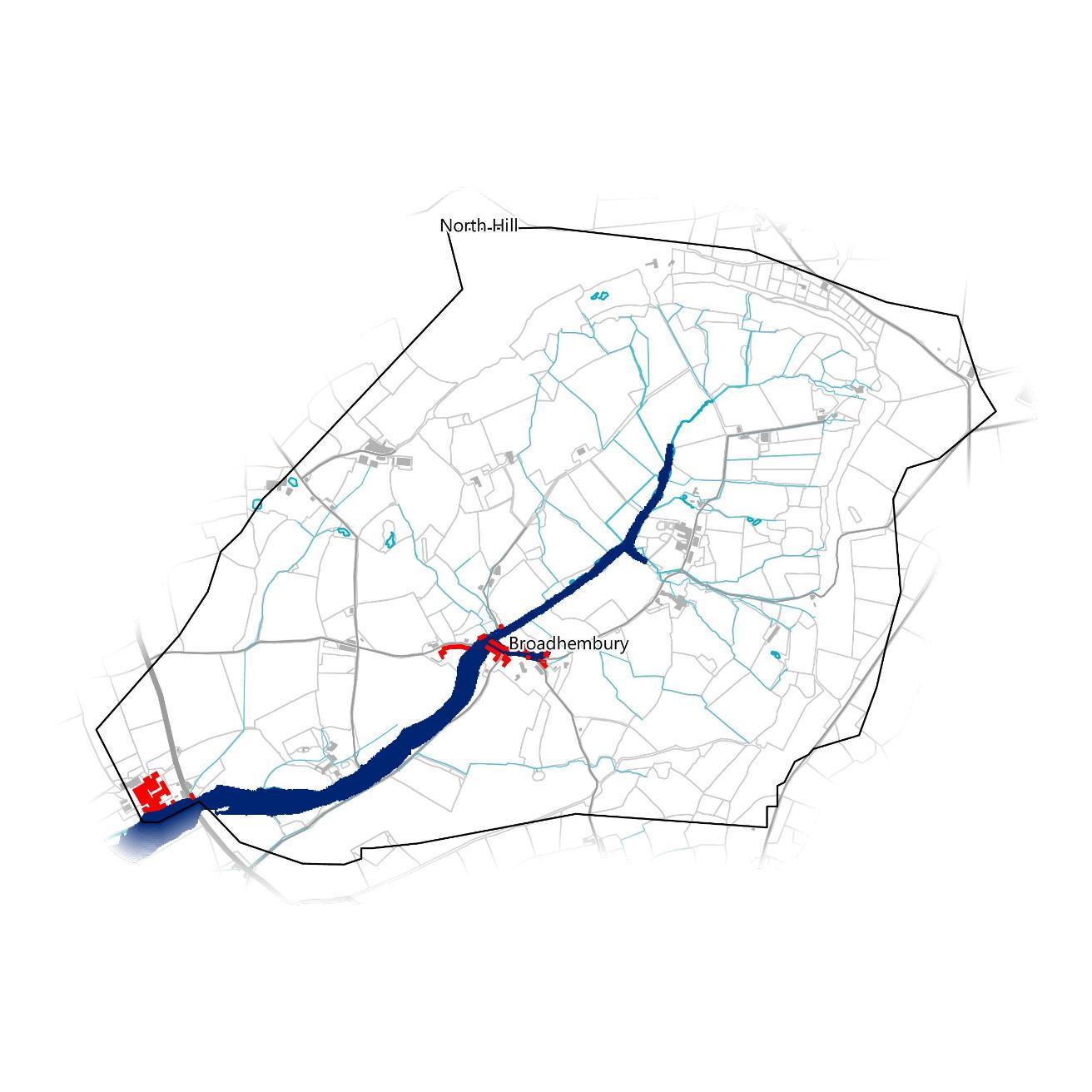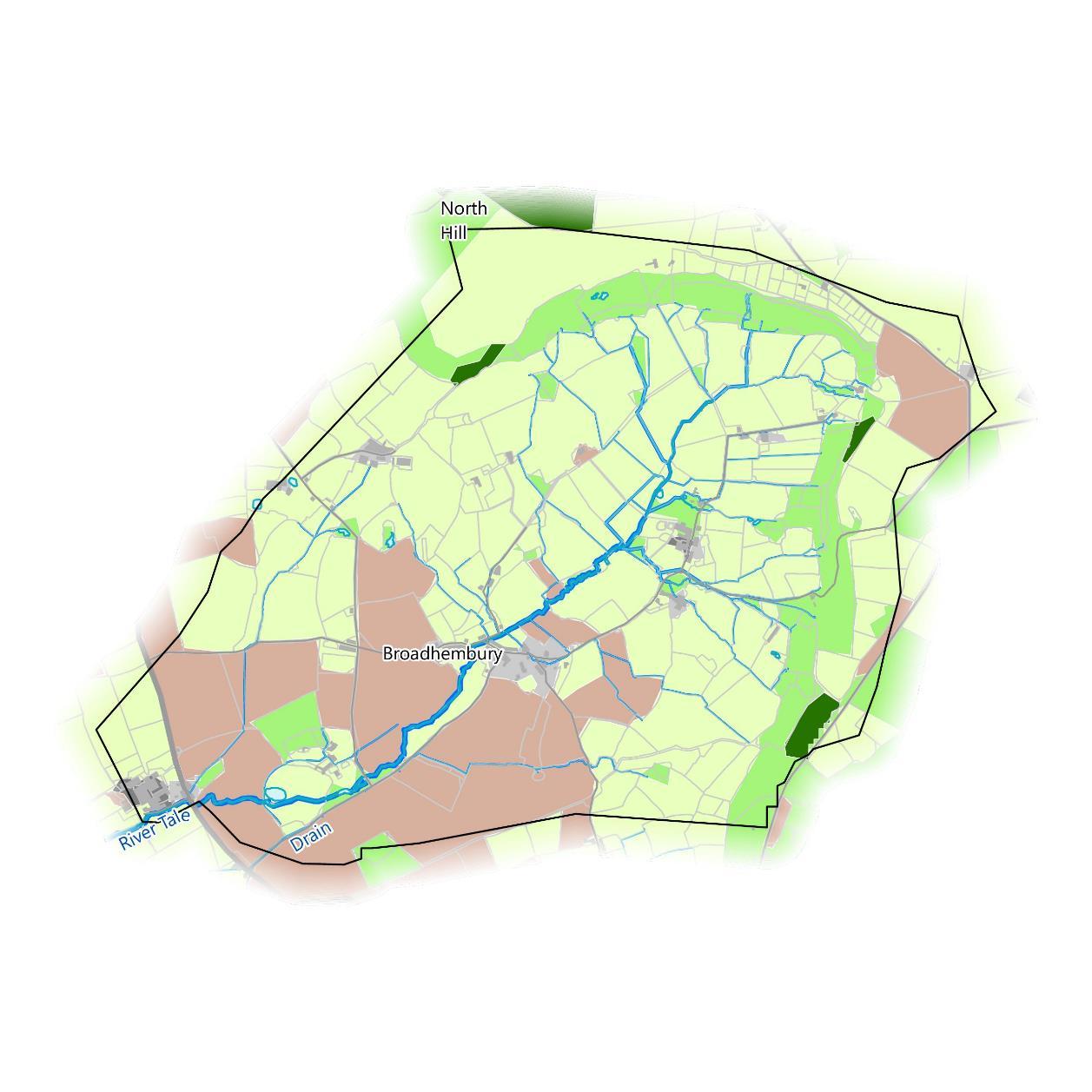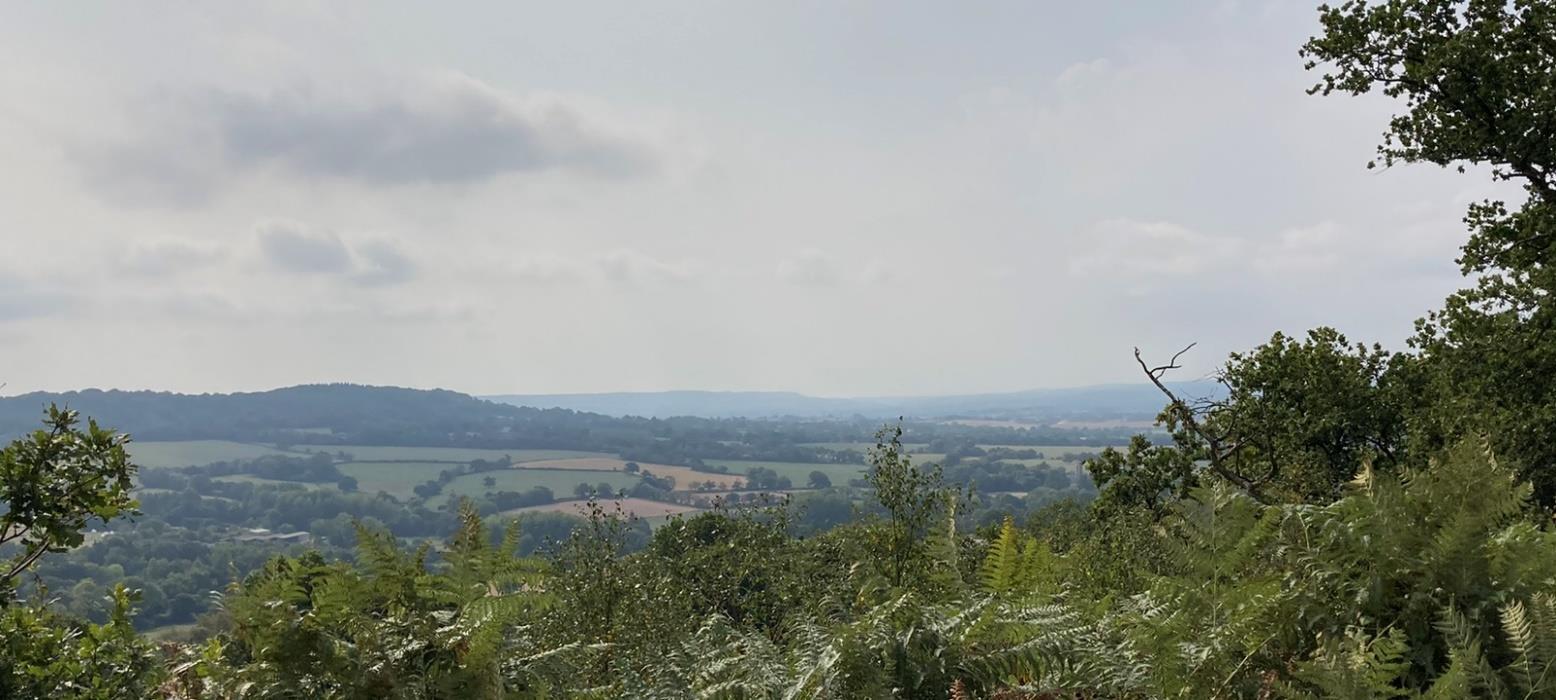
3 minute read
Why this Catchment?
Over view
Why this Catchment?
The micro-catchment was selected in the GIS modelling step because it contains a large number of properties near Broadhemburythat
are potentially at flood risk. The map below shows which buildings overlap with the EA’s modelled “Flood Zone 2” area, specifically areas at risk of flooding from rivers, as identified during the micro-catchment mapping process.
There are 13 buildings potentially at risk out of 82 in the catchment, approximately 15.8% of them. The catchment’s size of 8.58km2 gives an area of 0.66km2 per building at risk.
The water framework directive (WFD) status in the wider Tale waterbody catchment is Poor. If property owners are willing to work with land owners and vice versa, then small-scale NFM measures upstream in the catchment have the potential to benefit a large number of properties and improve water quality.

Micro-catchment Over view
Topography
The micro-catchment covers the rural area surrounding Broadhembury and includes several farm houses and industrial buildings. The A373 runs along the south of the catchment connecting it with Honiton to the east. The micro-catchment forms the watershed for the River Tale that flows southwards through the catchment with several tributary’s feeding in from the east and west. Overall, the micro-catchment falls within the Broadhembury County Parish and is administered by Broadhembury Parish Council. The map on the right shows the steepness of slopes. A plateau with a steep ridge lines the catchment edges to the north and east, while the majority of the catchment forms a bowl with fairly low, uniform slopes, particularly in the south and central areas. The River Tale runs along the valley bottom.



Micro-catchment Over view
Land Cover
The way the land is used has significant impacts on flood management. Land use has been mapped here using the Centre for Ecology and Hydrology’s (CEH) Land Cover Map 2019. This is a model derived from satellite imagery at 25m resolution. The land use here is primarily improved grassland, accounting for 56% of the catchment, followed by arable and horticultural land that covers another 21%. The arable land is found in the base of the catchment and is almost the exclusive land use in this area. The wooded areas of the catchment occupies a similar amount of land. Broadleaved woodland follows the ridge line, with some small patches of coniferous woodland scattered amongst the broadleaved growth. It should be noted that this land cover map model is not a perfect representation of land use as it simplifies UK land cover into very broad classes.

Micro-catchment Over view
Land Cover
Land use observed during the catchment walkover matched the land use mapped here using the Centre for Ecology and Hydrology’s (CEH) Land Cover Map 2019 above.
The catchment was steep-sided with a ‘V’-shaped valley turning to more ‘U’-shaped valley past Broadhembury.
This catchment appears to be heavily influenced by dairy farming and had a lot of maize being grown in the Southwest section of the catchment at the time of survey. Most land use was arable and pasture, with upland trees circumnavigating to the North and East around the edge of a plateau.

From Devon & Somerset Gliding Club: South across the headwaters of the River Tale valley



